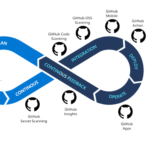Unlock the secrets of robust, reliable, and secure infrastructure by mastering networking essentials every DevOps engineer must know. Whether you’re deploying microservices, managing cloud-native workloads, or troubleshooting production outages, understanding Linux networking is your superpower. Dive in to future-proof your skills and drive business impact!
Table of Contents
- Introduction: Why Networking Matters in DevOps
- Key Networking Concepts Every DevOps Engineer Should Know
- Essential Linux Networking Tools
- Troubleshooting Techniques: Step-by-Step Guide
- Real-World Examples & Case Studies
- Latest Tools, Technologies, and Frameworks
- Challenges and Solutions in Practice
- Future Outlook: Trends in DevOps Networking
- Conclusion & Key Takeaways
- Contact Us
- References & Further Reading
Introduction: Why Networking Matters in DevOps
DevOps has transformed the way software is built, tested, and deployed. Yet, the glue that holds modern infrastructure together is networking. In cloud-native, containerized, and hybrid environments, reliable networking is critical for application performance, security, and scalability. For DevOps engineers, proficiency in Linux networking is not just a “nice-to-have”-it’s essential for diagnosing outages, automating deployments, and enabling seamless collaboration between development and operations.
Key Networking Concepts Every DevOps Engineer Should Know
- OSI and TCP/IP Models: Understand the layers (physical, data link, network, transport, application) and how data flows between them.
- IP Addressing & Subnetting: IPv4/IPv6, CIDR notation, public vs. private IPs, and subnet masks.
- Routing & Switching: Static vs. dynamic routing, default gateways, ARP, and VLANs.
- DNS & Name Resolution: How hostnames are resolved, DNS caching, and troubleshooting tools like
digandnslookup. - Ports & Protocols: Common protocols (TCP, UDP, ICMP), well-known ports, and their use in services (HTTP, SSH, etc.).
- Firewalls & Security: Linux firewalls (iptables, nftables, firewalld), port filtering, and network segmentation.
- Virtual Networking: Bridges, veth pairs, overlays (VXLAN), and how containers (Docker, Kubernetes) network internally.
Essential Linux Networking Tools
Linux offers a rich toolkit for networking. Here are the most important tools every DevOps engineer should master:
- ip: Modern replacement for
ifconfig, used for managing interfaces, routes, and tunnels. - netstat / ss: Inspect open ports, listening services, and socket statistics.
- ping & traceroute: Test connectivity and trace network paths.
- tcpdump & wireshark: Packet capture and deep traffic analysis.
- nmap: Network scanning and host/service discovery.
- curl & wget: Test HTTP endpoints and download files.
- dig & nslookup: DNS troubleshooting.
- iptables / nftables: Firewall configuration and traffic filtering.
- ethtool: Inspect and modify Ethernet device parameters.
Sample: Checking Network Interfaces with ip
ip addr show
This command lists all network interfaces and their IP addresses.
Troubleshooting Techniques: Step-by-Step Guide
Troubleshooting network issues is a core DevOps skill. Here’s a structured approach:
- Check Physical Connectivity: Use
ip linkorethtoolto verify interface status. - Verify IP Configuration:
ip addrandip routeto ensure correct IP and routing. - Test DNS Resolution:
digornslookupto resolve hostnames. - Ping & Traceroute: Use
pingto check reachability,traceroutefor path analysis. - Check Firewall Rules:
iptables -Lornft list rulesetto inspect rules. - Inspect Open Ports:
ss -tulnornetstat -tulnfor listening services. - Capture Traffic:
tcpdump -i eth0for live packet capture.
Example: Diagnosing a Web Application Outage
- Ping the server:
ping 192.168.1.10 - Check if port 80 is open:
ss -tuln | grep :80 - Test HTTP endpoint:
curl -I http://192.168.1.10 - Review firewall:
sudo iptables -L | grep 80
Real-World Examples & Case Studies
-
Case Study 1: Kubernetes Networking in Production
A fintech company in Bengaluru scaled its Kubernetes cluster to 100+ nodes. Network bottlenecks surfaced due to misconfigured CNI plugins. By analyzingcni0bridge stats and usingtcpdumpon pod interfaces, they identified dropped packets and fixed the overlay network configuration. More details -
Case Study 2: Diagnosing DNS Failures in CI/CD Pipelines
An e-commerce firm’s CI/CD jobs failed intermittently. Usingdigandtcpdump, engineers discovered DNS timeouts due to an overloaded local resolver. Migrating to a cloud DNS service resolved the issue. More details -
Case Study 3: Automating Firewall Rules with Ansible
A SaaS provider automated firewall management using Ansible playbooks andiptablesmodules, ensuring consistent security across hundreds of Linux servers. More details
Latest Tools, Technologies, and Frameworks
- Cilium: eBPF-based networking for Kubernetes, enabling high-performance, secure connectivity and observability.
- Calico & Flannel: Popular CNI plugins for Kubernetes networking.
- WireGuard: Modern, fast VPN protocol for secure tunnels.
- Netdata & Prometheus: Real-time network monitoring and alerting.
- Terraform & Ansible: Infrastructure-as-Code tools for automating network provisioning and configuration.
- Cloud-Native Networking: AWS VPC, Azure VNets, and GCP VPCs for scalable, programmable networks.
Challenges and Solutions in Practice
- Challenge: Diagnosing intermittent connectivity in hybrid clouds.
Solution: Use distributed tracing, centralized logging, and network flow logs (e.g., AWS VPC Flow Logs) to identify bottlenecks and packet loss. - Challenge: Managing firewall rules at scale.
Solution: Use configuration management tools (Ansible, Puppet) and version control for firewall policies. - Challenge: Securing east-west traffic in microservices.
Solution: Implement service mesh (Istio, Linkerd) for mTLS, policy enforcement, and traffic monitoring. - Challenge: Network troubleshooting in containers.
Solution: Usensenter,docker exec, and CNI plugin logs to debug container network namespaces.
Future Outlook: Trends in DevOps Networking
- eBPF-powered Observability: Deep, low-overhead visibility into network flows and security events without kernel modules.
- Zero Trust Networking: Identity-based access, micro-segmentation, and encrypted traffic as defaults.
- AI-Driven Network Automation: Machine learning for anomaly detection, predictive scaling, and self-healing networks.
- Edge Computing: Distributed networking for edge devices, requiring lightweight, programmable network stacks.
- IPv6 Adoption: Growing importance as IoT and cloud-native workloads scale.
Conclusion & Key Takeaways
Networking is the backbone of modern DevOps. Mastering Linux networking concepts, tools, and troubleshooting techniques empowers you to build, secure, and scale resilient infrastructure. Stay curious, practice hands-on, and keep up with emerging trends like eBPF, service mesh, and network automation. Your expertise will make you indispensable in any DevOps team.
Ready to Level Up Your DevOps Networking Skills?
Have a challenging networking problem or want to upgrade your infrastructure? Contact our experts at StoneTusker for personalized consulting and solutions tailored to your business!
References & Further Reading
- Red Hat: What is Linux Networking?
- Linux Network Administrator’s Guide (O’Reilly)
- Kubernetes Networking Concepts
- Ansible Firewall Management
- Google Cloud: DNS Best Practices
- Cilium: eBPF-based Networking
- Book: Network Programming with Go (O’Reilly)



